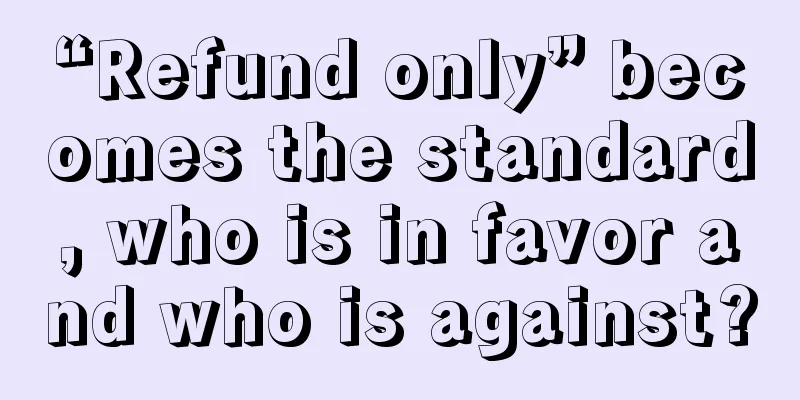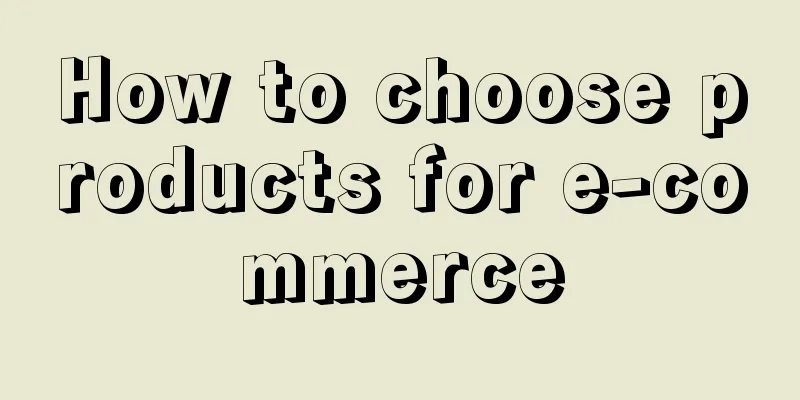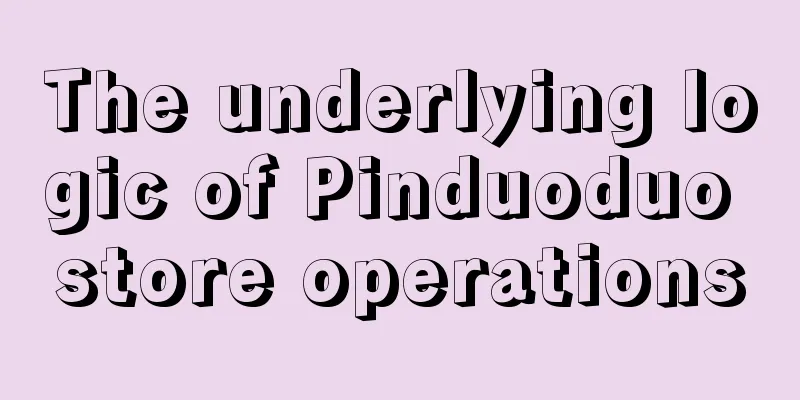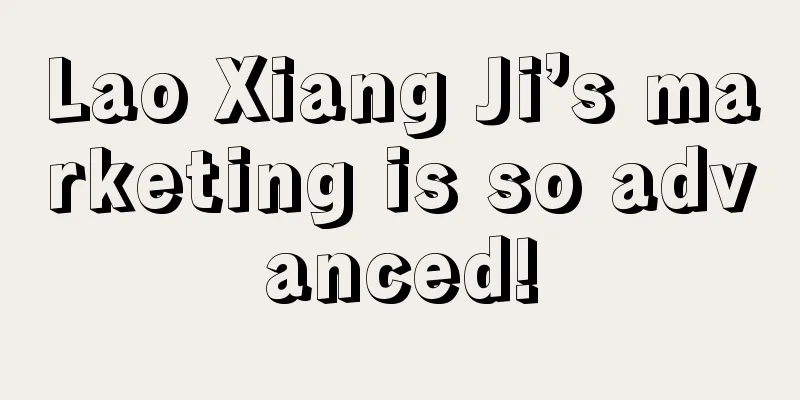Co-creation Sense 4.2——China’s post-new consumption VS Japan’s fourth consumption, which one is the future of “consumption”?
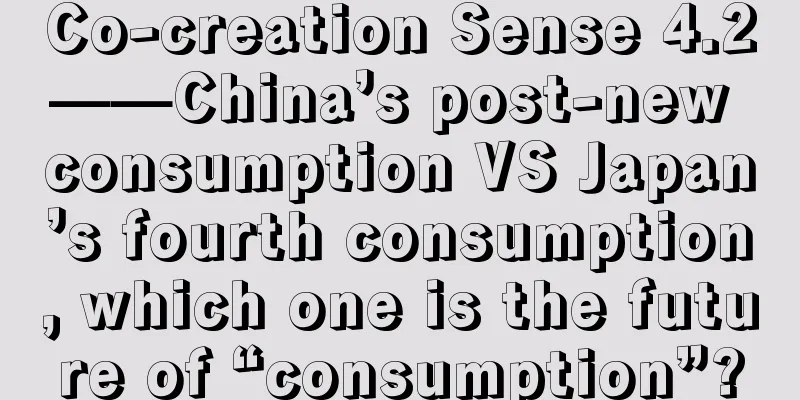
In the previous article "Sense of Co-creation 4.1 - Clearing the Mist on "Consumption": The Fourth Consumer Age and the Rise of Sharing Consciousness", we learned the definition of "consumption" from Baudrillard, Kevin Kelly, and Miura Hideo, and saw the rise of "sharing" consciousness in Japan's fourth consumer age. So what are the characteristics of China's "new consumption"? Compared with Japan's fourth consumer era, will we follow in its footsteps or break through the barriers and evolve? 1. Past "new consumption" VS current "new consumption", China, the post-new consumption era is comingLet’s recall, how many years have we been calling for “new consumption”? The first one may have come from 2015. In that year, the State Council proposed "new consumption" in November; Wu Xiaobo first promoted "new middle class"; and then (in 2016), Jack Ma came up with "new retail". The expansion of "new" echoes the national self-confidence, the innovation and struggle of the rapid economic development; it corresponds to the courage and willingness to consume, and it is consumption for shopping, enjoyment, self-satisfaction, and individuality... But today, these keywords have completely changed beyond recognition. If we take the debut of Li Ziqi's "Lanzhou Beef Noodles" in 2016 as the starting point, and after six years of gestation and the epidemic until 2023, people no longer pursue the so-called rapid economic development and maximization of benefits, but pay more attention to the quality of life and inner satisfaction; no longer rush around all day and live in big cities, but rediscover local characteristics and the power of nature; no longer stay up late to work overtime and work hard to make money, but begin to pursue simplicity and nature, share happiness, and gain a sense of relaxation in ordinary life. After years of differentiation and conflict, we found that the "new consumption" of the past and the "new consumption" of today have three different underlying foundations. 1. Different consumer groups: the new poor, AI natives, and new humansWho were the new consumer groups in the past: the new middle class? New white-collar workers? Post-90s? Online shoppers? What about today? The new middle class has faded into the background, the new white-collar workers have disappeared, and those born in the 1990s have become middle-aged men; while those born in the 1990s and 2000s, the new poor, the working class, the sophisticated poor, and the young people from small towns are emerging in an endless stream. More importantly, more and more young people who are labeled as "digital natives" are unwilling to be bound by various barriers and try to become wall-breakers in life, consumption and the workplace to achieve a "new" freedom: some are unwilling to be audience members and hope to stand in the spotlight and become performers; some redefine themselves with their in-depth insights into a certain field or a unique interest; some stop looking for jobs and go "looking for things"; some retire early and live the life they long for... Different subjects naturally have different attitudes towards life - from self-affirmation to self-expansion; from the most beautiful individual to the greater beauty of society; from sharing beauty to creating beauty together, and there is even a little bit of the flavor of "the rich help the world, the poor take care of themselves." Especially when we are discussing "digital natives", a new generation of "AI natives" is accelerating its rise. Their relationship with consumption is more radical: from enjoying and experiencing consumption to creating consumption in consumption; they examine the meaning of consumption, not only in terms of acquisition and possession, but also in terms of emotional satisfaction, life testimony, and self-construction. Feel the torn labels: "nomad", "small utopia", "dark woman", "poor but not poor", "ragged woman", "breaking the filter", "post-95 mother", "handsome uncle", "mature marriage", "2.5 families", "actively preparing for old age"... 2. Different ways of dialogue: emotional and companionship
In the past, you only needed to come up with a positioning, propose a concept, promote a lifestyle, and create an internet celebrity, and consumers would flock to you. Now? It is difficult to communicate with new people without "emotions".
The starting point of all these phenomena can be attributed to "emotion", which goes beyond the class/product/circle/interest group and becomes a certain "emotion". In addition, consumption generated by this kind of "emotion" is difficult to create, but is based on the growth and beauty generated by the "emotional value" brought about by the companionship of "dialogue". When we inject "love" into meaningful exploratory "dialogues", find "like-minded people" in companionship "dialogues", create "surprises" in consensus scenario "dialogues", and use "sincerity" to deepen the sense of belonging for co-creation "dialogues", "new consumption" will be completely different - "dialogues" will have a new mentality: equality, level eyes and parallel; and also new values: co-construction, co-creation and co-existence. Fundamentally speaking, insight into the nature of this era of "dialogue", understanding the meaning of "dialogue", and mastering the methods of "dialogue" will become a watershed in the future marketing achievements of individuals, companies and organizations. Refer to Brand Ape’s article “Ten Thousand Word Analysis | Post-New Consumption Era: The Rolling Emotional Track and the Crazy Value of Dialogue”. 3. Meaningful: From experience consumption to meaningful consumption
In the past, most new consumption can be attributed to new scenarios and new experiences: Hema’s instant fresh food, Meituan’s localization, Luckin’s new penetration, Weilai’s super users, and Anaya’s new “Life Can Be More Beautiful” community... Many “new” things can be understood and predicted, including digitalized freight yard personnel, efficient services, agile responses, connected communities, super IDs, and ubiquitous scenarios. In essence, they are all new lives reconstructed with digital technology: useful X to solve problems X new experiences. However, today's new life and new consumption would be difficult to understand without the word "meaningful".
In the ever-emerging "meanings", "meaningful" lifestyles and new consumption are not planned or predicted, but grow out. To further understand, early consumption was "problem consumption" that found pain points and solved problems; later digital consumption was "experience consumption" that created new scenarios, and today and in the future, Brand Ape believes that "meaningful consumption" will dominate. The so-called "meaningful consumption": brands and products help users complete life tasks not only in new ways, but also for new reasons - it proposes new reasons for people to use something, a new value proposition, and gives a new interpretation and new direction to the important meaning of the product. For example, immersive theater is a sandbox for free exploration and all-round participation anytime and anywhere; the part-time "wild teachers" in various short videos are self-employed and proactive life designers; the "partners" in minimalist social networking are the natural connection between small utopian communities and returning to daily trajectories; scenes such as yoga, mindfulness and meditation are about repair and leisure, body and self-discipline, sharing and sharing. Xu Zhiyuan once made a brilliant statement: "Our current society is not actually lacking in material things, but lacking in meaning. Most consumption is actually consumption of meaning and identity." From this, Luo Zhenyu came up with a new definition of "new consumerism" - using consumption to solve the problem of lack of meaning. One view is that for a long time to date, "problem consumption", "experience consumption" and "meaning consumption" have been highly superimposed, interdependent and mutually reinforcing. As open and collaborative "digital natives" and "AI natives" continue to evolve, as emotions and desires are constantly reset in "dialogue", and when "meaningfulness" is firmly embraced by consumption, we get the first conclusion of this article - in 2022, the "post-new consumption era" with different subjects, equal dialogue and emphasis on meaningful consumption has arrived. Inevitably, the new "post-new consumption era" will have new rules of survival. 2. China's "Post-New Consumption Era" VS Japan's "Fourth Consumption Era", True Nuclear PowerAt the same time, we found that the isomorphism of China's "post-new consumption era" starting in 2022 is everywhere:
But can we say that China is also in the fourth consumer era? Absolutely not. Although facing similar causes to Japan's fourth consumer era, such as class stratification, widening wealth gap and single aging, after insight, it is not difficult to find that the causes of China's "post-new consumer era" have the following four unique factors. 1. An upward trend interrupted by external factors: The jungle is dangerous, find a new pathWe know clearly that the future is becoming increasingly dangerous as the macro environment continues to change from 2019 to 2023:
It is obvious that Japan's fourth consumer era is based on the bubble economy and innovation stagnation, while China's upward momentum was forcibly interrupted by external forces. Therefore, China's "post-new consumption era" is not about the loss of strong economic momentum, but the reality that risks are accelerating and the threshold of opportunities is rising in the face of booming growth. Therefore, the key challenge becomes how to constantly negate existing experience, refresh cognition, find new paths or create new rules in the new normal and flow of change. 2. From digital empowerment to AI collaboration: Rethinking and recoding lifeFrom data empowerment to the digital revolution, and then to the current surge of digital intelligence, this has become an obvious thing. Mobile phones, cars, travel, home appliances, and homes... these smart terminals that are closely related to everyone's digital life are being rethought under AI as they offer an abundance of solutions for how to evolve next. Furthermore, human-machine dialogue and human-machine collaboration AGI is happening. It can be an extremely efficient tool, a digital employee who is a work partner, or even the "creative emergence" of human-machine collaboration. Therefore, in the face of AI, how to deal with it is not important, and there is no standard answer. But the most important thing is the thought that everyone needs to put into this matter, and the answer that you agree with after thinking about it. And Japan? It seems to be still stumbling in the digital age. 3. Multiple consumption coexisting: upgrading, grading and "new sinking"When it comes to "consumption", Japan is truly a "small country with few people", while China has the "vast land and abundant resources" to enjoy the dividends of time travel. Therefore, China's consumer society is destined not to be single-level, two-level or three-level, but infinitely multi-level, with various consumer eras and societies overlapping and coexisting. Take "sinking" as an example. Rather than saying that the sinking of the market in recent years marks the beginning of China's consumption downgrade in pursuit of cost-effectiveness, it is better to say that the sinking market is just a product of regional and class differentiation. This special development stage of China has led to an extreme differentiation in wealth among the people, and the overlap of the "consumption era" of each group in the process of their own consumption upgrading. Wu Sheng has a greater expansion - the so-called "new sinking": not sinking, but a deeper, equal and present "dialogue".
Let's look back at Japan's consumption level? Two-dimensional, three-dimensional? How can it reach the four-dimensional blessed by China's time, not to mention the five-dimensional attached to the metaverse: normal movement, fluid life, and eternal liquid. 4. Driven by entrepreneurs born in the 1990s and 1995s
As mentioned earlier, Japan's consumption reflection was guided by sociologists and many public intellectuals (Hayao Miyazaki), while China's new consumption was created by a different group of people - Chinese entrepreneurs born in the 1980s and 1990s and Generation Z and Generation Alpha. The older generation of entrepreneurs have won brilliant wealth and excellent families, but their impact on society is far less than that of the post-80s entrepreneurs: DJI's Wang Tao (1980), Byte's Zhang Yiming (1983), Mixue's Zhang Hongfu (1984), Yuanqi's Tang Binsen (1982), Ideal's Li Xiang (1981), Xiaopeng's Xia Heng (1983), Pop Mart's Wang Ning (1987)... Now, those born in the 90s and even 00s who are pursuing something more "meaningful" have arrived. They and their passion are sharp in their own way. They fight forward one after another, changing the world with their tiny power and creating a new world with their passion. When they build brands, they have unique insights; when they create products, they carefully seek change; when they build culture, they persist in their passion; when it comes to wealth, they make it in a proper way; when it comes to failure, they keep their edge to themselves...; the most valuable thing is that they are willing to take responsibility for themselves and put their efforts into action. Without mentioning the well-known Wang Ning of Keep (1990) and Nie Yunchen of Heytea (1991), let’s talk about three more people:
With new expressions and new thinking, they gradually gain a foothold in the new normal and begin to influence those around them. In addition, although most of China's public intellectuals are pretending to be asleep or talking nonsense, there are still some thoughtful media such as "13 Invitations", "New Philosophers" and "Youth Magazine"; some real entrepreneurs such as Yu Minhong and Lei Jun; some keen scholars such as Li Shanyou and He Fan, who are exploring, seeking truth, and gathering "life" to help you and me find the "meaning" and "power" of life and entrepreneurship.
Well, because of the above, this leads to the second conclusion of this article: the characteristics of China's post-new consumption era are "co-creation and sharing". This is also the biggest difference from Miura Ten's fourth consumption in Japan, which is only "sharing", and it is more imaginative! Faced with such trends and changes, Brand Ape asks: In the post-new consumption era, can brands become a platform for co-creation and sharing among new consumer groups? Author: Brand Yuan, WeChat public account: Brand Yuan (ID: brand-yuan) |
Recommend
How to write new media titles? 10 practical methods behind thousands of popular titles!
A good title is like a magnet that can quickly att...
99 yuan to sleep in a hall, prices doubled, homestays broke contracts, how fierce are the "accommodation assassins" this May Day?
The May Day holiday is approaching, but we have di...
Xiaohongshu has small ambitions, but local businesses are getting anxious
In order to turn losses into profits, Ele.me has b...
Can the "Shao Yuxuan" who start a new business return to the top?
Can the influencers who "left" with traf...
The ticket is 40 yuan and the surrounding area is 800 yuan. Hongshan Zoo is really good.
Nanjing Hongshan Forest Zoo has become popular on ...
How long does it take for temu to place an order after it is put on the shelves? Is the order placed quickly?
Some seller friends are operating cross-border e-c...
What should I do if Shopify cannot be accessed? What is the reason?
There are still many merchants doing cross-border ...
How is the Allegro cross-border e-commerce platform built? How does it operate?
As the largest online market platform in Poland, A...
Which foreign shopping website is the best? What are the international website platforms?
In our country, the mainstream shopping websites a...
The rise and fall of Xiangpiaopiao: Brand strategy vs. corporate strategy
As a brand, Xiangpiaopiao cup milk tea is successf...
How does a data analyst write a "useful" analysis report?
Many data analysts are trapped in the endless coll...
How to write a personal evaluation
How to write a personal evaluation? How to optimiz...
How does Amazon offer free shipping? Does Amazon offer shipping insurance?
As one of the world's largest e-commerce platf...
If you want to build private domain traffic, you must clarify these 4 issues
In the process of building private domain traffic,...
10,000 words to solve five puzzles of lululemon, subverting your understanding of brand breaking circle
Lululemon's brand slogan has swept the world. ...

